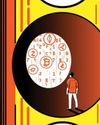
A few weeks ago, as a heady blue-versus-red vote count was underway, punctuated by see-sawing percentage points, halfway across the globe to elect arguably the world’s most powerful political leader, many Indian and Indian-Americans were on tenterhooks.
In October, the outgoing Donald Trump administration proposed yet another series of obstacles to the H-1B visa process, a popular way for Indians to immigrate into America. It hopes to do away with the computerised lottery system, which is a random selection process, and replace it with a wage-based system in which applicants will be selected based on salary levels.
This is the latest in a series of attacks against the H-1B programme, including a suspension on the entry of foreign workers (and therefore, issuance of new immigrant visas) until the end of the year that Trump announced in June.
However, Trump was not the only obstacle. Let’s break it down.
What’s going on with the H-1B?
According to the new rules, the wage criteria for those coming to the US on an H-1B visa, which is widely used by technology companies to hire skilled Indian workers, has been significantly increased by the Department of Labor (DOL). Later in the month, the Department of Homeland Security (DHS) made the announcement of doing away with the lottery, in a statement titled ‘DHS, Trump Administration Protect American Jobs from Unfair International Competition’.
Esta historia es de la edición December 4, 2020 de Forbes India.
Comience su prueba gratuita de Magzter GOLD de 7 días para acceder a miles de historias premium seleccionadas y a más de 9,000 revistas y periódicos.
Ya eres suscriptor ? Conectar
Esta historia es de la edición December 4, 2020 de Forbes India.
Comience su prueba gratuita de Magzter GOLD de 7 días para acceder a miles de historias premium seleccionadas y a más de 9,000 revistas y periódicos.
Ya eres suscriptor? Conectar

Home-Cooked Meal Is Now Greatly Valued
The pandemic has also brought with it an improved focus on hygiene, use of technology in dining, rise of cloud kitchens and resurgence in popularity of Indian ingredients

Paytm 3.0 - Reaching Near Breakeven In Two Years
As of 2020, Vijay Shekhar Sharma’s super app for financial services had run up losses in thousands of crores. Now, as digital payments gets yet another boost courtesy Covid-19, he’s hopeful of reaching near breakeven in two years

THE PANDEMIC HAS CAUSED WOMEN GREATER LABOUR PAIN
Covid-19 has shown that women are more likely to face the brunt of job losses than men, and find fewer opportunities when they want to resume. That apart, several have to deal with increased hours of unpaid work at home and even domestic abuse

LEADERSHIP WILL BE ABOUT SEEING THE BIGGER PICTURE
Leaders must not only guard their teams first during a crisis, but also deal with stakeholders with respect and dignity. And apart from pursuing business goals, they should remain committed to our planet and the environment

PHILANTHROPY SHOULD BE HUMBLE, BUT NOT MODEST
Apart from building a flexible and resilient framework for the future, philanthropists, civil society and the government must work in tandem so that every rupee is absorbed on the ground

INTEGRATED HEALTH CARE, TECH WILL DISRUPT SECTOR
While clinical research will get a boost, having a skilled workforce and public spending on health care will be challenges in the near term

DIGITALISATION WILL HELP IN VALUE CREATION
As the pandemic brings technology and innovation to the core of business and daily life, the next decade will see about 150 million digital-first families in India

Industry 4.0: Climate Revolution?
Augmenting sustainability alongside digital capabilities is an economic, competitive and global opportunity for India’s businesses, but regulations need to reflect intent

EV Dream Still Miles Away
Electric vehicles have remained a buzzword in India for years. But not much has moved on ground due to high upfront costs, range anxiety and charging infrastructure

Living Waters
A virus has caused us to scramble for oxygen but our chokehold on the environment is slowly strangling the very waters that breathe life into us. The virus is a timely reminder: We are merely consumers, not producers of life’s breath on this planet